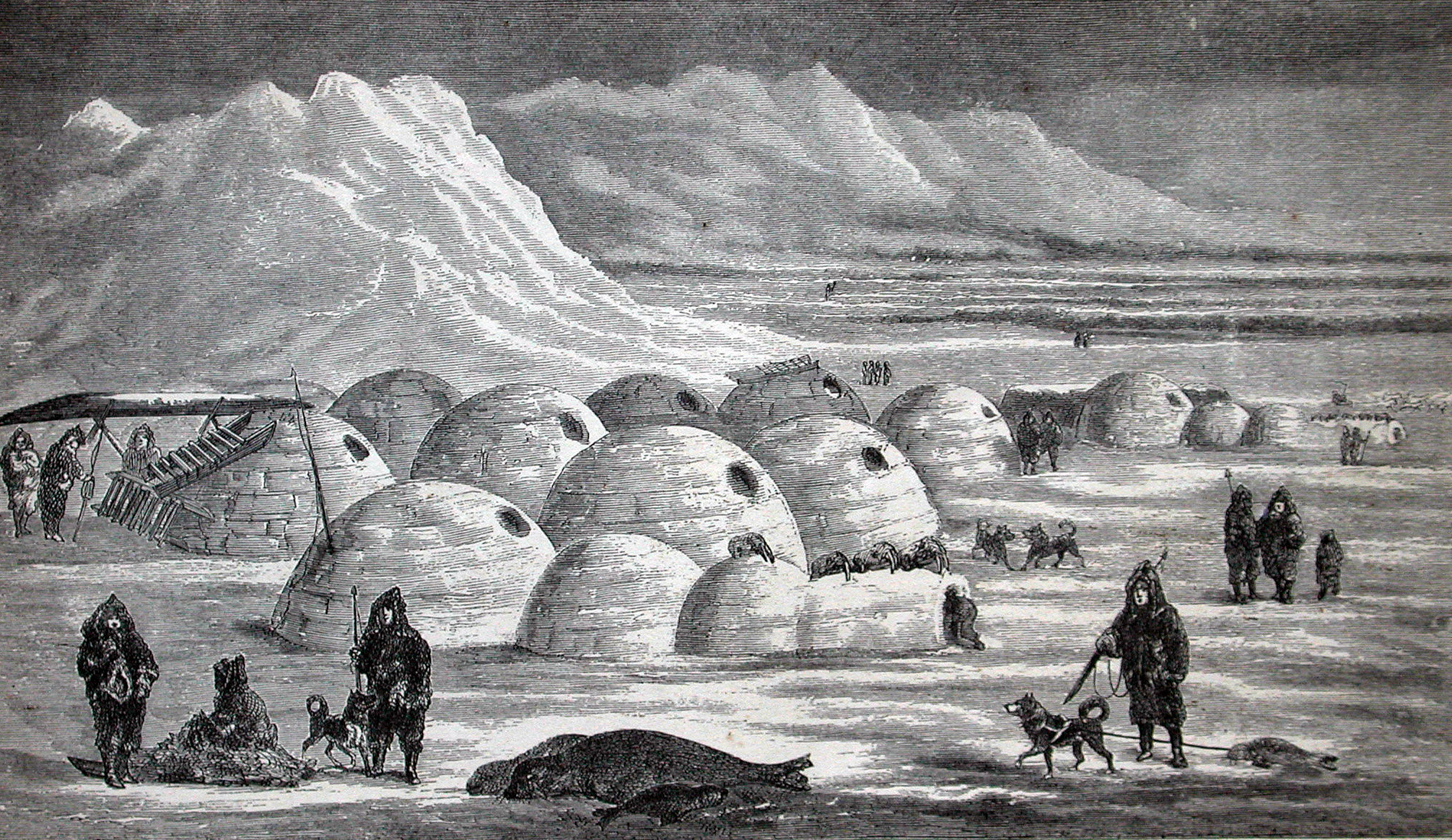A good portion of the nation is digging out from under the snow right now. It seems like the perfect time for an igloo problem. How warm is it in an igloo?
Human bodies undergo various chemical reactions and in the process give off heat. By "heat", I should be clear that I mean thermal energy not temperature. If you only have your body to keep warm (i.e. no hand warmers or space heaters), then the amount of heat produced in a day should be equal to about 2000 Calories since this is the amount of chemical energy in food that one eats in a day. This 2000 Calories per day is equivalent to about 97 W of power. A good portion of this energy will eventually turn into heat, but where does this heat go?
If heat doesn't somehow escape the igloo, then the temperature inside would keep increasing and the Inuit would burn themselves to death. Fortunately, heat escapes igloos in many different ways. For example, as the air inside heats up, the air molecules begin to bounce around very fast. When they collide with the walls of the igloo, some of their energy gets absorbed and the igloo molecules start to wiggle around a little bit. As the igloo molecules wiggle around they hit other igloo molecules and this process continues until eventually some of the igloo molecules on the outside surface start jiggling too and bumping the cold air outside. This whole process ultimately results in heat being transferred out through the walls of the igloo. Now if the room is going to stay the same temperature (i.e. have the same thermal energy), then the extra energy being produced by thermal processes has to be equal to the energy lost through the walls.1 This means a one person igloo will have 96 W of power flowing through its walls. There's a nice equation that describes how energy flows through a material,
P = k · A · (Thot − Tcold) / x,
where P is the power passing through, k is called the thermal conductivity, A is the area of the material, x is the thickness, Thot and Tcold are the temperature of the hot and cold ends, respectively. The thermal conductivity of snow is about 0.16 W/m·°C. On a cold day, the outside temperature can be as low as −45 °C (−49 °F). The walls might be 0.3 m (~1 ft) thick. If we make our igloo 2 m (~6.5 ft) in diameter, then the total area of the walls would be 3.1 m2.2 Solving for Thot we find that the temperature inside the igloo is
Thot = P · x / [k · A] + Tcold
= (96 W) · (0.3 m) / [ (0.16 W/m·°C) · (3.1 m2)] − 45 °C
= 13 °C.
That's a toasty 13 °C or 55 °F. According to Wikipedia, igloos can be anywhere from −7 °C (19 °F) to 16 °C (61 °F) when warmed by body heat alone. So if you're stuck in the cold, warm up by building yourself a nice little igloo hut.
[1] I'm assuming the energy lost through the floor and through a small door is negligible.
[2] This assumes the area of the walls is roughly that of a hemisphere of diameter 3 m.


No comments:
Post a Comment